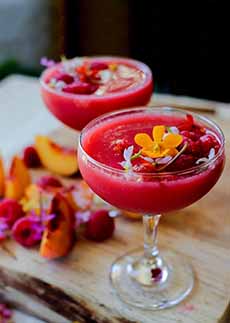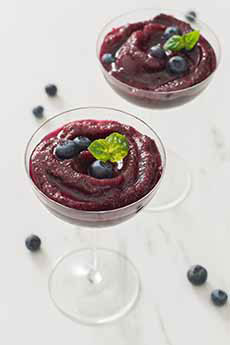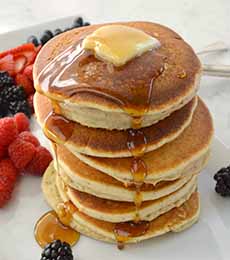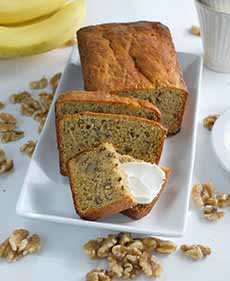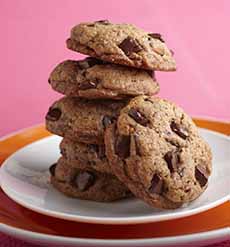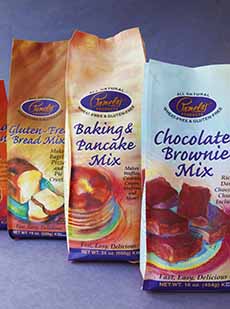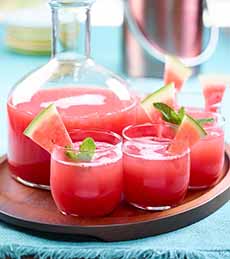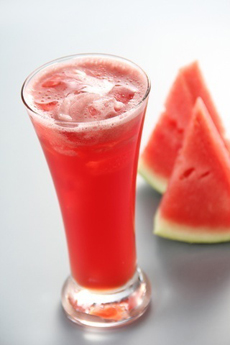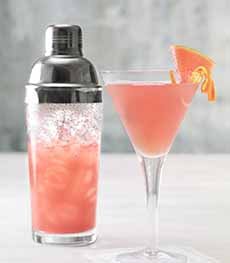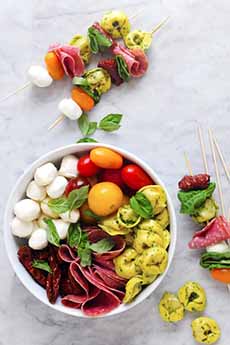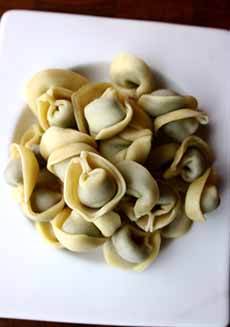|

[1] Alp Blossom, our vote for prettiest cheese in the world (photo © Murray’s Cheese).
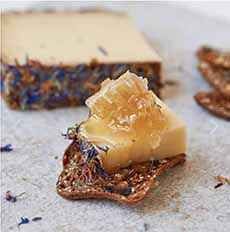
[2] Serve it with crunchy toasts and a dab of honey (photo © Murray’s Cheese).

[3] You can cut the cheese into cubes and sprinkle the flora on top (photo © DiBruno Bros).

[4] Dressed to impress: Get the whole wheel! (photo © DiBruno Bros).
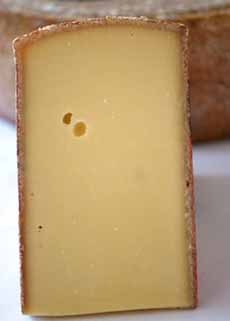
[5] Appenzeller, a hard cow’s-milk cheese produced in the Appenzell region of northeast Switzerland (photo © Artisanal Cheese).

[6] Emmental is the name of the place, while Emmentaler describes something from there. Here’s more about it (photo © Wisconsin Cheeseman).
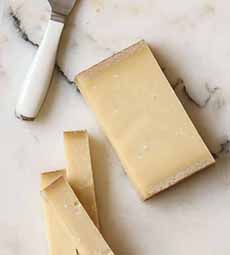
[7] Gruyère dates to the 13th century. At 12 months or older, it delivers aromas of caramelized apples and notes of hazelnutty brown butter. It is popular as a table cheese and for fondue and grilled cheese. Originally made in Switzerland, it is now produced in France, Germany and the U.S. as well (photo © Murray’s Cheese).

[8] Hoch Ybrig is a raw cow’s milk cheese made in Switzerland, patterned after Switzerland’s famous Gruyère cheese. The recipe was created in the 1980s by cheesemaker Rolf Beeler, and has become a favorite among mountain cheese connoisseurs (photo © Artisanal Cheese).

[9] Tête de Moine, a cheese produced since 1192 by the monks of the abbey of Bellelay, in Switzerland. The name means monk’s head. In 1982, a device, the girolle, was invented to make rosettes from the cheese (photo © Artisanal Cheese).
|
|
This cheese is flavorful and beautiful, but it also qualifies as food fun—and food art, for that matter.
Alp Blossom is an alpine cheese covered with blossoms and herbs (photos #1 to #4).
It is perhaps the prettiest cheese in the world.
ALP BLOSSOM FLAVOR & AROMA
This pasteurized, semi-hard cow’s milk cheese is reminiscent of Gruyère: nutty and a bit beefy.
The flora (flowers and herbs) which coat the rind give the cheese a unique herbaceous aroma and a meadowlike sweetness with savory nuances.
The blend includes chervil, cornflower, lavender, lovage, marigold, marjoram and rose petals.
The paste is pale yellow with occasional eyes (holes)*. It delivers flavors of cream and nuts, with a bit of mild washed rind funk on the finish.
Alp Blossom is made by Sennerei Huban, Austria’s first cheese co-op and school, established in 1901 in Doren, a municipality in the district of Bregenz in the western Austrian state of Vorarlberg.
The co-op works with 34 local milk herds, each with an average of about 15 Brown Swiss cows.
Alp Blossom is made from Brown Swiss cow milk, handcrafted into 10-pound wheels that are aged for six months. The flora are applied at four months.
Brown Swiss cows were bred to have milk with high butterfat content, that yields a rich flavor and a dense, creamy finish in the cheese.
Alp Blossom starts as Hubaner, the co-op’s signature cheese: a firm wheel with a washed rind.
After four months of aging, the wheel is covered in the flora. The result: Magic!
HOW TO SERVE ALP BLOSSOM CHEESE
The cheese is so beautiful, it will outshine any other cheese on the plate.
But there are solutions to serve it with other cheeses:
Bloomy-rinded and goat cheeses are a perfect visual counterpart—plain white.
They have a soft textural contrast to the semi-hard paste of Alp Blossom.
Bloomy-rind cheeses are creamy and mushroomy, fresh goat cheeses are milky and tangy, contrasting with Alp Blossom’s nuttiness.
To Drink
In general, cheeses pair best with their local beers and wines. Local recipes were crafted to pair with other local foods.
For Alp Blossom, beer and wine from Austria and Germany are excellent choices, but you can go beyond boundaries.
Beer & Ale: Amber Ale, Bavarian Beer, Belgian-style Ale, Brown Ale, Bock or Doppelbock Beer, Stouts.
White Wine: Austrian Grüner Veltliner, Riesling; Alsatian Crémant d’Alsace (sparkling), Pinot Gris, Pinot Noir, Reisling.
Red Wine: Beaujolais, Pinot Noir, Zinfandel.
When we have Alpine cheeses at the end of a meal, we may also serve a dessert wine.
Alp Blossom is available from Murray’s Cheese and DiBruno Bros.
WHAT ARE ALPINE CHEESES OR MOUNTAIN CHEESES?
Alpine cheeses, also called mountain cheeses, are a range of cheeses originally produced in the Swiss and French Alps.
The area now includes the Italian and Spanish Alps, and the style of cheese is also made in non-mountainous cheeses.
Mountain cheeses are only produced in the summer months, using milk from cows that spend the summer on mountain pasture. They feed upon the grass plus the flowers and herbs that are unique to each region.
The milk creates strong, aromatic cheeses, often made in large wheels.
According to Caseus Montanus, an international association of mountain cheese producers, a mountain cheese is one produced and aged above 800 meters (approximately 2,500 feet).
According to Artisanal Cheese, scientific studies on the flavor profile of mountain cheeses have found as many as 100,000 micro-organisms in the flora of the high altitude mountains, as compared to less than 10,000 microorganisms in lower prairie altitudes.
This intensity of microorganisms is responsible for the deep and complex flavors of mountain cheeses.
The best-known mountain cheeses available in the U.S. (made from cow’s milk, except as noted) include, among others:
Appenzeller (Swiss – photo #5)
Beaufort (French)
Bleu des Basques Brebis (French, sheep’s milk blue cheese)
Cantalet (French)
Comté (French)
Emmental (Swiss – photo #6)
Fontina Val d’Aosta (Italian)
Fourme d’Ambert (French, blue cheese)
Gruyère (French and Swiss – photo #7)
Hoch Ybrig (Swiss – photo #8)
Raclette (Swiss)
Sbrinz (Swiss)
Tête de Moine (Swiss – photo #9)
Vacherin Mont-d’Or (French)
Valdeón (Spain, blue goat’s milk cheese)
The categories of Swiss cheese include:
Extra-hard: Sbrinz
Hard: Emmental, Gruyère/Greyerzer, Sapsago, Vacherin Fribourgeois
Semi-hard: Appenzeller, Bündner Bergkäse, Mutschli, Raclette, Tête de Moine
Semi-Soft: Vacherin Mont d’Or
Soft: Gala
If you’re a lover of these cheeses, consider a tasting with representation from each category.
WHAT IS SWISS CHEESE?
If you don’t see “Swiss cheese” on the preceding list, it’s because it’s not a term used in Switzerland or any other part of Europe.
Swiss cheese is the generic term used in the U.S. for several related varieties of domestic cheese, modeled after those originally made in Switzerland.
Emmental or Emmentaler (the first spelling is the name of the place, the second describes something from that place) is the cheese Americans think of as the generic Swiss cheese.
While Americans believe that Swiss cheese has holes*, properly known as eyes, Emmental has them but not all kinds of Swiss cheese do.
There are some 450 known Alpine cheeses, classified into five categories: extra-hard, hard, semi-hard, semi-soft and soft. Cow’s milk is used in 99% of the cheeses produced.
AMERICAN MOUNTAIN CHEESES
Mountain-style cheeses are made in other countries, too; and no mountain cheeses are required.
A Vermont-made mountain cheese, Tarentaise, was named “Best Farmstead Cow’s Milk Cheese” at the 25th American Cheese Society Conference, a competition for for American-made cheeses.
Other noteworthy mountain-style cheeses:
Briar Rose Creamery “Callisto” (Oregon)
Fiscalini “Lionza” (California)
Jasper Hill Creamery “Alpha Tolman” (Vermont)
Roth Cheese “Surchoix Grand Cru” (Wisconsin)
Sprout Creek Farm “Toussaint” (New York)
Upland Cheese “Pleasant Ridge Reserve” (Wisconsin)
Great cheese awaits!
> Discover Many More Cheeses in Our Cheese Glossary.
________________
*Some cheeses, like Emmental, are made with three types of bacteria: Streptococcus thermophilis, Lactobacillus and Propionibacter shermani. In a late stage of cheese production, P. shermani consumes the lactic acid excreted by the other bacteria, and releases carbon dioxide gas. This gas forms the bubbles that appear to be “holes” when the cheese is sliced. The cheese industry calls these holes or tunnels, “eyes.” Mountain cheeses without eyes are known as “blind.”
|
